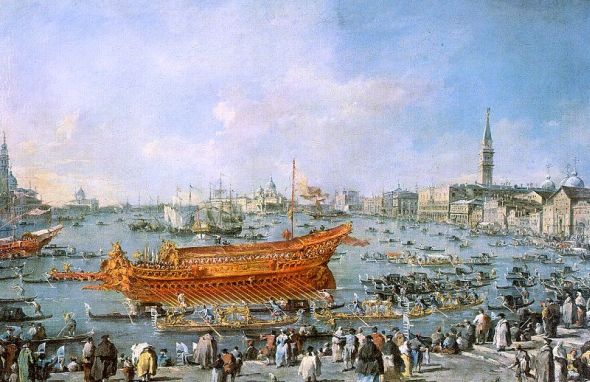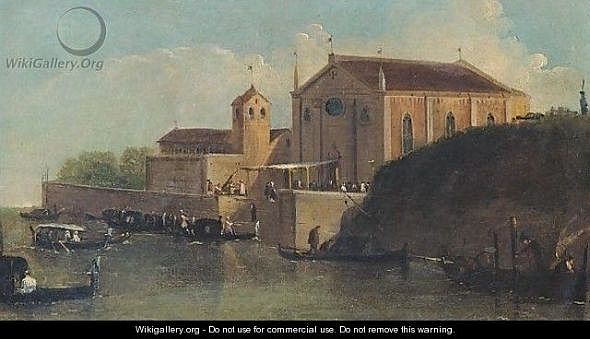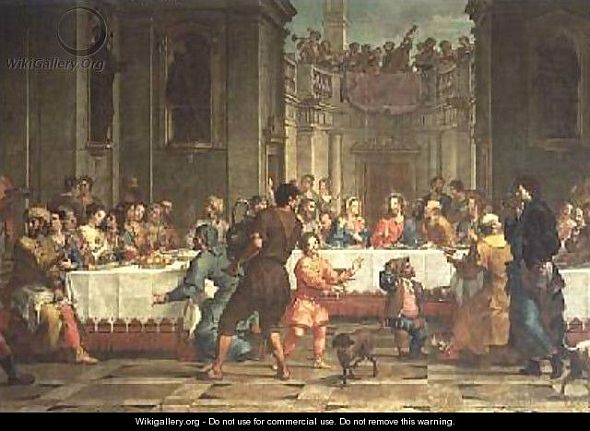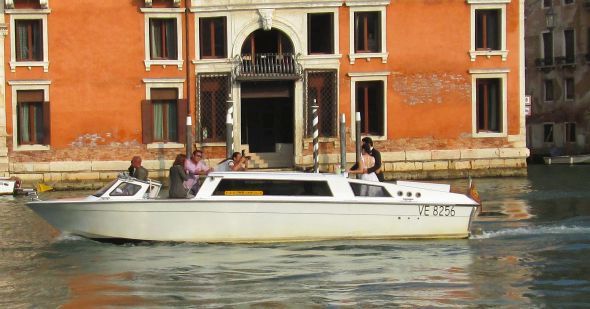
Venice has had its share of noteworthy visitors over the past millennium or so — popes, kings, emperors, and so forth. The usual cast of characters in your usual empire.
This weekend we had George Clooney and his bride, Amal Alamuddin, whose four-day wedding festival was quite the talk of the town. Not all happy talk, but that’s normal for here.
By now my trusty readers must be able to imagine the range of comments.
On the positive side: She’s gorgeous, she’s brilliant, her clothes are amazing. And may I add my own personal drama, my inability to decide which I would rather have, given the choice: Her 7-carat diamond ring, or her hair. I don’t think it’s fair that she gets to have both.
On the negative side: The lavish partying will not have much effect on the local economy (read: Expensive outsiders hired); blocking areas off for security (from whom?) such as the Rialto and even a stretch edging the Grand Canal, will create inconvenience for the indigenous people; all the glamour will not specially improve the image of Venice in the eyes of the world, considering the depressing degradation that continues unabated. The roiling maelstrom of waves caused by the journalist-bearing taxis and assorted motorboats accompanying the espoused pair and their A-list guests created more than the usual madness in the Grand Canal, inspiring yells of anger from gondoliers.
Several people interviewed by the Gazzettino have essentially said “Who cares?” More specifically, one woman opined, “He’s got a big villa on Lake Como. Why couldn’t he go there?”
Many of these remarks go to show, once again, that Venetians are phenomenally hard to impress. But what would be the opposite extreme (assuming that an event of this magnitude could go to an opposite extreme)?

Let’s imagine for a moment that they had decided to get married in Eek, Alaska or Bland, Missouri. In such a case, I think the whole town would have been totally agog, what with housewives bringing homemade coconut cakes to their hotel and draping big streamers and banners over the main street, like on Homecoming Weekend: “WELCOME GEORGE AND AMAL,” and there would be a parade like on the Fourth of July, with baton-twirlers and the big fire truck. And fireworks. And the local paper — say, the Bat Cave, North Carolina “Bat Biz” — would publish a long article, as they used to do in the old days, describing every dish eaten and every frock worn and every wedding present bestowed. We’ll have to wait for People magazine to do that for us.
A few details have sneaked out (despite all the vaunted vows of complete silence).
For example: They (he, she, their wedding planner, whoever) didn’t like the furniture in their five-room nuptial chamber at the Aman Canal Grande hotel. Too modern. So they had it changed. Out with what was there, which was put into a temporary storage tent, and in with a batch of antiques. I have NO DOUBT that their taste is better than the decorators’. I’m just saying. They didn’t complain about the Tiepolo fresco on the ceiling, fortunately. Maybe they didn’t notice it.
Also: The palace on the street behind the hotel was finally undergoing repairs, hence was covered with scaffolding. Ugly! So they paid to have it removed and, I presume, put back when the party was over.

But on the whole, for Venice this is just one more in an infinite procession of fancy guests and inconceivably lavish entertainments. In the Venetian Republic, when high-class people came for long visits, staying for weeks like relatives in the antebellum South, the city literally spared no expense.
When Henry III, King of France and Poland, visited Venice for a week in 1574, some noteworthy events included his attendance at the chanting of the Te Deum on the Lido (I presume at the church of S. Nicolo’, which is the only thing that was there), passing under a triumphal arch designed by Palladio and decorated by Tintoretto and Veronese. Then there was the state banquet, held in the Doge’s Palace in the monster Great Council Room; not only were all the ladies garbed in white and draped with spectacular jewels — the tablecloth, flatware, plates, and bread were all fashioned entirely of sugar. The table was decorated with elaborate sculptures of two lions, a queen on horseback between two tigers, David and San Marco, surrounded by kings, popes, animals, plants and fruits, also made completely of sugar.
Speaking of guests, Venice hosted, among others, Carlo Gonzaga in 1609, the Grand Duke of Tuscany in 1628, Maximilian of Bavaria in 1684, the Duke of Brunswick in 1685, Frederick IV of Denmark in 1708, Prince Frederick Christian of Saxony in 1740, the Duke of York in 1767, the Emperor Joseph II in 1769 and 1775. Pope Pius VI arrived in 1782 and Gustav III of Sweden in 1784. To read the schedule of festivities and what was built from the ground up to entertain Prince Paul Petrovich, the son of Catherine the Great and his wife in January, 1782, is to stagger belief.
You’d have to replace a lot of furniture to come up to the level Venice used to consider normal on these occasions.
So while I invoke for the happy couple “good wishes and male children” (auguri e figli maschi), as the saying goes, I appreciate a general grudging resistance here to make too much of the just-concluded joining in holy — actually, civil — matrimony.
Because, as Ernest Hemingway summed it up in 1950:
“She used to be Queen of the Seas, and the people are very tough and they give less of a good God-damn about things than almost anybody you’ll ever meet. It’s a tougher town than Cheyenne when you really know it, and everybody is very polite.”



4 Comments
I really enjoyed this post. I was staying in Venice last week renting a small apartment in Palazzo Loredan dell’Ambasciatore overlooking the Grand Canal. On the Monday evening, the canal became a ‘roiling maelstrom’ not from the Clooney flotilla, but from the size and number of the hailstones landing on it. I wonder how the Clooney machine would have coped with that! For people who seemed to want to keep so much of the wedding secret, it seemed strange to parade up and down the Grand Canal, the busiest ‘highway’ in the world.
I think there’s a difference between “secret” and “private.” If you’re in the entertainment business, everything is good for publicity, especially your personal life. The reason there was all the security and blocking off views and media access wasn’t because they wanted secrecy, it’s because they wanted to control the use of the photographs. If you know you’re doing something that has commercial value, you do what you need to do in order to protect that value. The money from the sale of the images is being donated to charity. I give them both high marks for doing exactly what they needed to do in order to get the most bang for their proverbial buck (and those bucks were many!). The old Venetians would have respected that, in my opinion.
Ha! I would have been a little disappointed if ‘i veneziani’ got terribly excited about George’s wedding. Good to see some things never change.
Vvenexians could look at the Amal wedding as in investment in their city’s future. What about a “Fondazione Giorgio Cluni” some 20-30 years from now, stuffed with some 20-30 million euros?